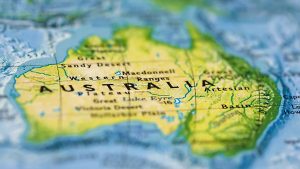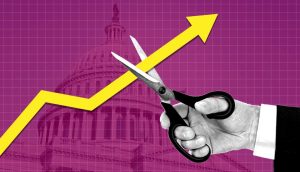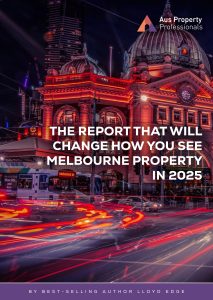Market Trends – what should we expect out of the Australian property market in 2025
Australian Property Market Forecast for 2025:
The Australian property markets are expected to continue rising through 2025, with price increases driven by anticipated interest rate cuts, housing undersupply, and strong buyer demand. According to Domain’s Property Price Forecast Report for FY2025, average house prices across the country are expected to increase between 4-6% (on average) in 2025.

Most experts agree there will be a national average increase over the year on dwelling values between 3%-6%.
But this is a national average only and doesn’t mean that all properties, across the country are guaranteed to rise.
Because the markets vary across the States and Territories, there is great variation in growth rates between States, cities, and even suburbs. Market performance is not guaranteed and is very difficult to accurately predict. This is because the driving factors are affordability, government policies, and environmental pressures which are constantly fluctuating.
Key Trends to Watch in 2025
- Interest Rate Cuts – Lower rates will increase borrowing capacity and demand.
- Rental Market Strength – With tight rental supply, investors will continue to see high yields.
- Government Policies – Reforms on negative gearing, stamp duty, and incentives for first-home buyers could impact demand.
- Construction Challenges – A lack of new housing developments could keep prices high due to limited supply.
State by State and Capital City Predictions for 2025:
The ongoing problem of limited housing supply remains — the low number of dwelling approvals each year and challenges faced in the construction sector are also likely to keep property prices high. There were 163,760 total dwelling approvals in the financial year of 2024, which is far below the National Cabinet’s goal of building 240,000 new homes each year to meet Australia’s rapidly growing population and demand for housing.
New South Wales: Sydney: 4-6% (houses and units)
Sydney is expected to continue in 2025 as as ‘Buyers Market’ which is great news if you’re a first home buyer, due to an increase in listings which will put downward pressure on prices. However, there is still a low level of building approvals which will cushion any large price falls in Sydney’s housing market. There are many micro markets within Sydney, being the countries most expensive city, with sought after area’s (those suburbs in affluent areas, close to the beach and trendy areas) are expected to have modest price increases. If you’re looking for a home, now is the time to buy as you have greater negotiation power and we are expecting to see more buyers enter the market when the predicted rate cuts come into fruition. Once interest rates occur, we are expecting an influx of demand and for prices to bounce back.
Where to look if you’re buying in New South Wales:
We aren’t expecting huge price increases across Sydney, but suburbs such as Tempe, Arncliffe and Rockdale that are benefiting from major infrastructure projects, such as newly completed transport links of the Sydney Gateway could be ripe for growth.
As mentioned in my book, Positively Geared 2e, suburbs that are benefiting from infrastructure projects, hospitals, or shopping precincts, are likely to outperform the averages. These investments often lead to increased demand and rising property values. Markets outside of Sydey including Newcastle and the Central Coast, are still growing in popularity but a bargain is likely out of reach. It’s the affordability of the South Coast beach side suburbs like Shell Harbour and Sanctuary Point that are likely to see the solid growth as buyers seek affordability alongside the rising trend for lifestyle to take priority.
Queensland, Brisbane: 5-7% (houses), 7-9% (units).
Brisbane property prices surged by 12.1% in 2024. While growth may moderate, Domain forecasts house prices will rise by 5-7% and apartments by 7-9% in 2025.
The 2032 Olympics-related infrastructure boom will continue to attract investors but this really comes at no surprise as we have been seeing this since March 2020, when Brisbane’s capital growth exploded to 50.2%, being fuelled by population growth and more affordable housing opportunities.
By the end of 2024, Brisbane climbed the ranks to finish the year with the second highest median dwelling value among the capital cities, with a median house value of $890k. With the persistent demand, coupled with a smaller inventory has led to increased competition among buyers, forcing prices to rise however not uniformly across Greater Brisbane.
The Queensland Government has forecasted that by 2046 an additional 500,000 people are to move into the Brisbane City Council area alone, increasing the population to 1,721,000 and a total of 2.2 million people to call south-east Queensland home projecting the population to reach 6 million people by 2046. This has resulted in the Queensland Government allocating $88.7 billion to a four-year state-wide building program.
Where to look if you’re buying in Queensland:
As mentioned in my book, Positively Geared, when it comes to investing in Queensland you need to look for locations that are genuinely good for growth potential, and to identify a solid investment grade properties through comprehensive due diligence. In 2025, I am keeping a keen eye on the Brisbane suburbs of Coorparoo (6.7% growth since February 2024. Source: Investar) and Springfield Lakes (17% growth, since February 2024, and 20% over the past 2 years. Source: Investar). Outside the city I am considering Noosa Heads (25% growth in past 12 months. Source: Investar) and the Moreton Bay Region (lower side, areas like Wynnum, Manly, and Manly West) that have seen an average of 13% growth in the past year (source: investar) because this area appears to be on a steady growth trajectory when looking at the previous 2 years growth rates and the 10 year average annual growth rates.
Victoria, Melbourne: 3-5% (houses), -2-0% (units)
Melbourne is expected to start picking up this year although is expected to still have moderate growth. Some parts of Melbourne had an oversupply of houses and pockets of the CBD have an oversupply of apartments. SQM research predicts that Melbourne house prices are facing an up to $40 000 drop over 2025. For buyers this might be the time to get into the market and buy, particularly if you are able to hold the property for the long term, or are adding a long term growth property to an existing portfolio that is already cashflow positive and positively geared.
In my book, I discuss how to spot the stages of property market cycles, and perhaps Melbourne is now hitting its floor. Although it is not sitting and waiting to “boom”, when prices are hitting rock bottom this is actually the time you should be getting in and buying before the increases. If you’re able to take the risk and short term pain, (with this downturn could last up to two years), buying in Melbourne might reap some serious and substantial returns in the long term, as I predict it is currently undervalued and a lot of investors are blind to the future potential.
Where to look if you’re buying in Victoria:
Frankston has shown some resilience with a 1% increase in prices in the past 12 months. It is popular with families and has been slowly going through some gentrification as new families move into the area.
Geelong has seen a 12% increase in prices in the past 12 months which is really going against the grain but this is likely because it is a major hub and due to its popularity, proximity to Melbourne, and available amenities.
Ballarat would be another top choice for consideration due to its relative affordability, and being a rural main centre with amenities.
If you haven’t read our 2025 Melbourne Property report recently released, you can get it by clicking here or on the image below:
Western Australia, Perth: 8-10% (houses and units)
Somewhat of a battleground for investors in 2024, Perth showcased a lot of potential with investors flocking to get a piece of the 20%+ annual dwelling price increases which was fuelled by a cocktail of strong population increases (including a lot of domestic migration), limited housing supply, and relative affordability compared to other Australian capital cities. The demand for housing greatly outweighed the supply and the pressure on prices was further heightened with Western Australia’s growing economy attracting even more people into the region.
The main risk when buying in Perth is whether a lot of the growth has been fuelled by investors buying up, rather than owner occupiers. When a lot of investors flood the market, they typically will want a well priced property for their money that may not necessarily be in the best location if you want to actually live there. The result is that some “cheaper” suburbs that might be otherwise an undesirable place to live, are suddenly flooded with a lot of investors buying which drives up the prices, making it appear a great place to invest when looking at the growth statistics however, if residents don’t actually want to live here then there will be an issue when it comes time to sell the property.
With Perth’s remoteness to the east coast of Australia, a lot of investors who living on the east coast might not truely understand the areas they are buying in, which is why it is important to get a buyer’s agent who intimately knows the area.
With prices rapidly rising in the west, you must consider whether it is now cooked? Has Perth reached its peak?
In my book, Positively Geared, I outline how to read and understand the property market cycles and how to determine whether to listen to “doomsday naysayers” about whether the market will crash. It appears that Perth is certainly reaching the top but no one will truly know when its peaked until it starts declining.
Where to look if you’re buying in Western Australia:
High rental yields are attractive if you’re looking for cashflow. You must question and take caution when investing in Perth. Innaloo has been a favourite and has already seen a 23% rise in prices in past 12 months. I would consider Armadale in Perth’s south-east because it is 25km from Perth CBD and is a self-contained suburb which is one of the country’s fasted growing Local Government Areas (LGAs). It is an extremely affordable market, a bit of an “ugly duckling” but with hefty industrial presence that includes a $4 billion container port, a $1 billion hydrogen plant, a $635 million rail line and station, and a $4.3 billion ship building project, I would not be surprised if we start to see some property flipping, knock downs and a whole gentrification of the suburb.
When looking outside Perth, Geraldton might be a good picks in regional WA because of its affordability $386k median house price), 20% growth in past 12 months, 12% average annual growth rate (10 year average) and 6.5% median rental yield. But only invest here with consideration if it has already peaked.
South Australia, Adelaide: 7-9% (houses and units)
Adelaide’s market has been one of the best performers, with house prices rising 14.4% in 2024. Growth is expected to continue at a 7-9% rate in 2025. Adelaide has grown in popularity due to its lifestyle appeal bring in both owner-occupiers and investors. Adeliade has an affordability to buy close to Adelaide CBD making it a good choice for growing families. In 2024, the State Government released a 30-year plan for Greater Adelaide, earmarking 36 per cent of all new housing growth in the northern suburbs. The population growth of Adelaide is set to continue steadily and sustainably. It is predicted to grow by a further 200,000 people over the next decade.
How Interest Rates Impact The Property Markets.
Australia’s property prices surged in 2024 despite high interest rates. However, with inflation easing, economists predict the Reserve Bank of Australia (RBA) will cut interest rates, much to the delight of mortgage holders! When interest rates drop, the lower cost to borrow will restore buyer confidence and increase demand for property, particularly among first-home buyers and investors. The expected “fear of missing out” (FOMO) effect could further drive property prices up as buyers rush to purchase before prices rise further and they are priced out of their preferred suburb.

Economic and Interest Rate Dynamics:
In an effort to curb inflation, the Reserve Bank of Australia (RBA) tightened its monetary policy causing interest rates to be a constant focus throughout 2024.
Whilst inflation has been brought under control, the higher interest rates of recent years will continue to negatively affect borrowing capacity and buyer behaviour in 2025.
The typical buyer behaviour we expect to see when interest rates start dropping is that suddenly they can afford higher loans, and there is more competition between buyers as those who were previously “priced out” of the market are now able to afford.
Many first-time buyers get spooked by high interest rates and sit on the sidelines until interest rates come down and loans become more affordable, so when the RBA drops rates, they are likely to jump back into the markets which also drives up demand and property prices.
Migration Impact to Property Prices:
In the year ending 30 June 2024, overseas migration contributed a net gain of 446,000 persons to Australia’s population. Whilst 2023 set a record of 536,000 people, this was a pivotal driver of rental markets as most immigrants rent for the first 3 to 5 years.
There is a fine balance to be kept between migration levels and the required influx of skilled migrants we need as a country. Skilled migrants revitalise the workforce, but they also fuel demand for housing, particularly around city centres.
What’s Ahead For 2025?
While the outlook is largely positive, the market will likely experience several hurdles:
- Affordability concerns: Despite softening growth rates, housing affordability will remain a critical issue, not only for home buyers but also for renters, with rents skyrocketing over the last few years as vacancy rates hit historically low levels.
- Construction bottlenecks: While the government is encouraging the construction of 1.2 million new dwellings in the next 5 years, labour shortages and rising costs will continue to delay new housing projects, which will also be more expensive, exacerbating the supply-demand imbalance. So far, the government has not hit the targets for number of dwellings to be built in the period, and this shortfall cannot easily be caught up.
- Regulatory changes: Ongoing debates about taxation policies, such as stamp duty reforms, and potential changes to negative gearing could influence market dynamics. As will any further interference to residential tenancy regulations by state governments, which have already scared off many investors.




